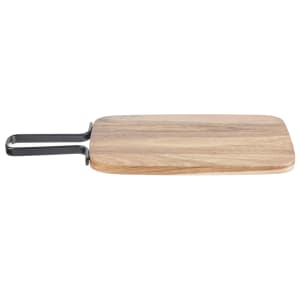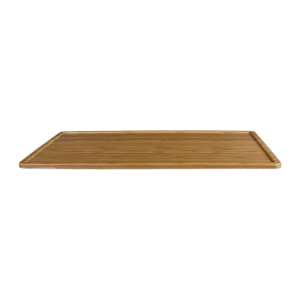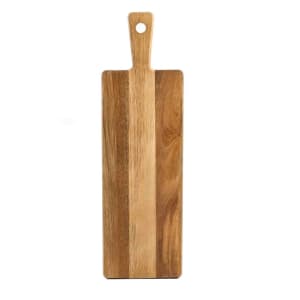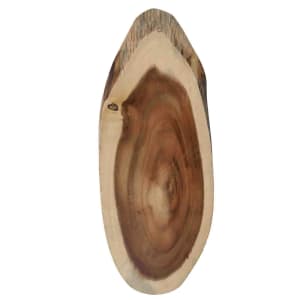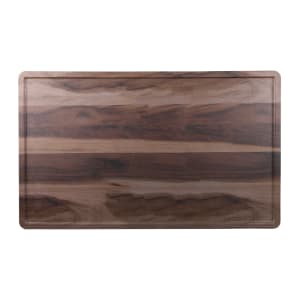Serving Boards
Our charcuterie boards enable operators to add these uniquely curated menu items to their repertoire. More
Charcuterie Boards: What You Need to Know
Serving boards, often used as cheese boards or bread boards, present an eye-catching spectacle on your restaurant's tables. These serving boards can become a centerpiece and merchandise themselves to nearby patrons. Because charcuterie is perceived as a high-class menu item, customers will expect appropriately elegant dinnerware to go with it.
We carry cheese boards in different shapes, sizes, and materials, enabling you to find a piece that matches your décor. However, choosing one can be difficult. While most charcuterie boards resemble wood, many are made from materials that are easier to care for, such as melamine and faux wood. We'll go over the benefits and drawbacks of the different materials, as well as how to care for them, below.
Common Questions About Serving Boards
What materials are bread boards made of?
Wood is the most common and traditionally preferred material for serving boards. The elegantly simple foods served on wooden boards – such as cured meats, cheeses, and a selection of breads – are matched by the raw look of wood. This combination creates an aesthetic of natural and traditional dining, which fits very well in a farm-to-table restaurant or any other establishment that aims to achieve a healthy, organic feel.
Because wood can be difficult to take care of, many manufacturers have opted to recreate the ambience of wood in other materials, such as melamine and resin. Melamine is a type of plastic fortified with organic fibers to give it exceptional strength and durability. However, melamine won't have the same texture that natural wood is prized for. Usually weighing less than wood, melamine and other types of resin can be shaped and colored to match anything the manufacturer desires. We carry a few other materials, such as black slate and bamboo, so consider the appearance and style of the food you'll be serving on them. Then try to pick a material that enhances the appeal of your menu items while being easy to sanitize.
How should I maintain a serving platter?
If you have a melamine or resin-based platter, you should be able to add it to your existing warewashing routine because melamine is safe for both high- and low-temperature commercial dishwashers. If you have real wooden serving boards, you'll need to care for them differently. Consult the product specifications page for the piece you're considering first to see if the manufacturer has any specific instructions; you should always follow more specific instructions over these general instructions. Some pieces might be glazed so they can be sanitized in a commercial dishwasher. If you have a natural wooden board, don't leave it soaking in the sink for long periods, and don't try to clean it in a commercial dishwasher. Clean it thoroughly with warm, soapy water and then dry it. After the board is dry, you can apply unscented cooking or mineral oil to the wood. Wipe any excess oil off and let the wood absorb the rest. This will keep your wooden serving boards in good condition for as long as possible.

